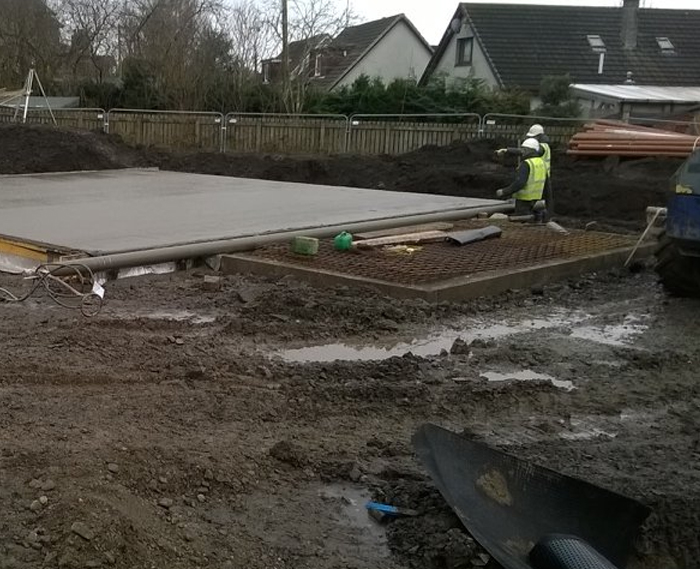How we can help with land remediation relief
At DAAFL, our tax specialists have been helping businesses to claim land remediation relief since 2015.
In that time, we’ve helped dozens of businesses claim back more than £19m in total.
Our tax specialists will help identify any investments or projects that may be eligible for land remediation relief
We’ll work with you to interpret environmental and remediation reports and examine spending to maximise the cost of qualifying relief.
We can even look at previous projects to identify any potential tax savings that were overlooked
Our experts will fill in the necessary paperwork and prepare it for submission to HMRC.




What is land remediation relief?
Land remediation relief (LRR) is a tax relief scheme that enables businesses to claim corporation tax relief of up to 150 per cent of the cost of remediating – or cleaning up – contaminated land or buildings.
It was introduced to encourage commercial property owners, investors, and developers to bring more ‘brownfield’ sites into use again by restoring land or buildings that had previously been contaminated back to their former state.
Remediation of contaminated land tax relief has been a catalyst for redevelopment and investment across the UK.
Unfortunately, many landowners and developers miss out on the benefits of LRR because they don’t realise their project could be eligible.
They might also fear contaminated land remediation relief is complex and time-consuming to apply for.
However, land remediation relief corporation tax savings can be significant, so it’s important to explore every option.
That’s where DAAFL can help you – Call our tax advisors now on 0161 529 0005 and find out how much you can save
Land Remediation Relief FAQs
Contaminated land remediation relief can provide significant tax savings in all commercial property sectors where companies are subject to corporation tax.
There are three rates of relief:
- Owner occupier or investors – 150 per cent
- Developers – 50 per cent
- Loss-making companies – 24 per cent tax credit (cash back)
Land remediation relief tax credit can be claimed on developments, regeneration projects, fit-outs and refurbishments, with a time limit of three years for retrospective claims.
- Land and buildings are classed as ‘contaminated’ if, due to previous industrial activity, there is contamination present which could cause harm
- LRR tax relief is available for a wide range of decontamination measures on both land and buildings
- This includes the removal of contaminated soil and water, the treatment of harmful organisms, the removal of natural contaminants (for example, radon and arsenic), the removal of buried structures, and the removal and treatment of invasive plants (such as Japanese Knotweed)
- Relief is also available for the removal of asbestos from buildings, post-tensioned concrete, building and machinery foundations, below-ground redundant services, and reinforced concrete basements
- Preparatory costs (consultancy, lab costs, regulatory costs)
- Employment and labour costs
- Capital expenditure (equipment purchased to complete the work)
- Sub-contractor costs
Land remediation relief legislation was first introduced by the UK government in 2001 and was updated in 2009.
It was established to encourage the cleanup and redevelopment of contaminated land by offering tax incentives to offset the costs associated with environmental remediation.
The land remediation relief tax credit allows companies to claim a tax deduction for qualifying expenses incurred during the remediation of contaminated land. This includes any costs associated with removing contaminants, treating polluted soil and water, and restoring the land to a safe condition.
Companies can claim 150 per cent of the qualifying costs against their taxable profits, reducing their overall tax liability.
Land remediation relief can be claimed in the accounting period during which the qualifying remediation expenses are incurred.
This means that companies can include the relevant costs in their corporation tax returns for the period when the remediation works take place.
To claim land remediation relief, companies need to identify and document all qualifying remediation expenses.
These are then included in their corporation tax return for the relevant accounting period.
It’s important to maintain detailed records and supporting documentation to substantiate the claim, including invoices, contracts, and reports from environmental specialists.
It’s advisable to seek assistance from experienced business tax specialists to ensure that the claim is accurate and fully compliant with HMRC regulations.
The time limit for claiming land remediation relief is generally two years from the end of the accounting period in which the qualifying remediation expenses were incurred.
Companies should ensure that claims are submitted within this timeframe to avoid missing out on potential relief.
Land remediation relief for investment property works similarly to relief for other types of property.
It allows investors to claim a significant tax deduction for any qualifying remediation expenses incurred to clean up contaminated land intended for investment purposes, such as rental properties or properties held for capital appreciation.
The costs associated with identifying, removing, and safely disposing of asbestos as part of a broader land remediation effort can be claimed under the relief.
However, it’s important to ensure that all activities related to asbestos removal are properly documented and comply with HMRC and other regulations.